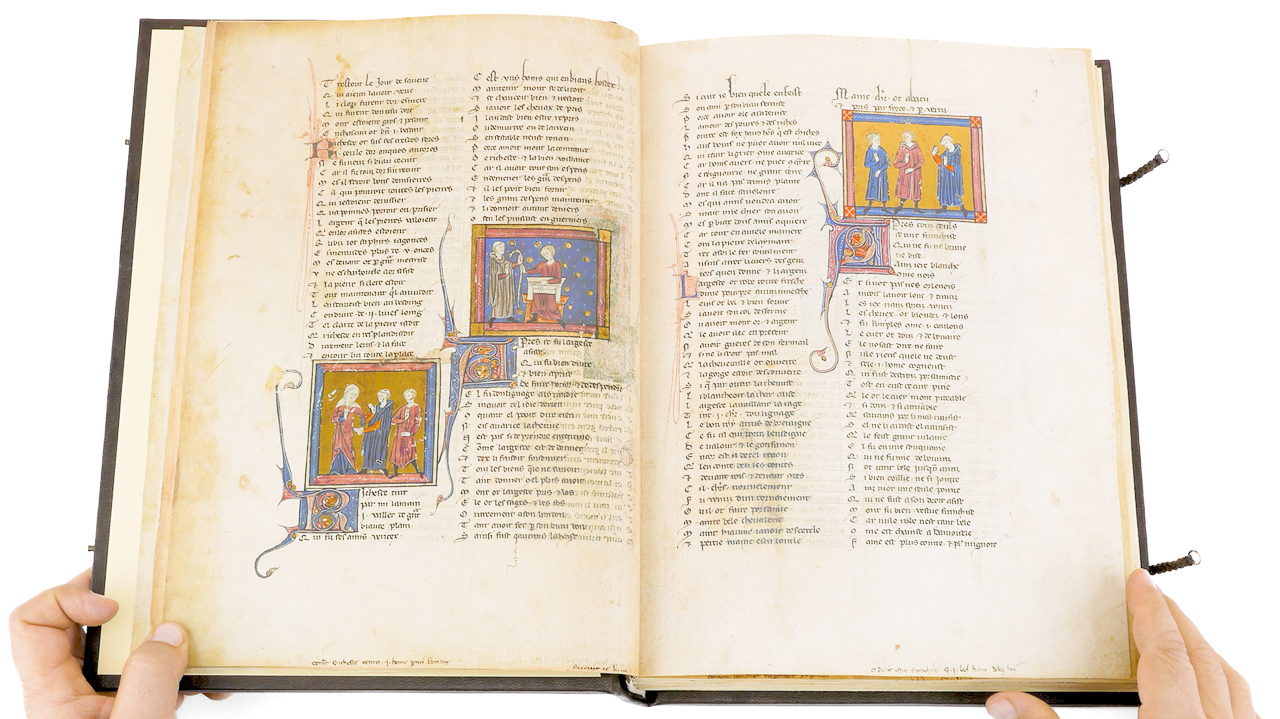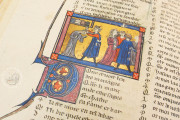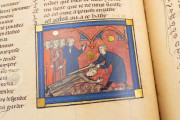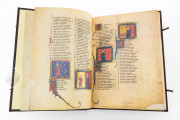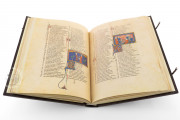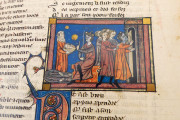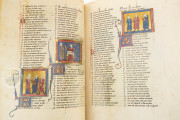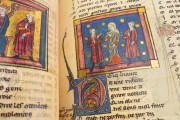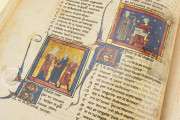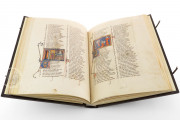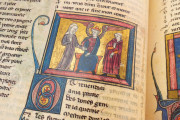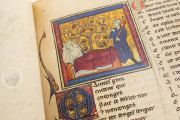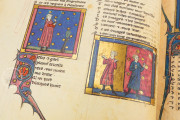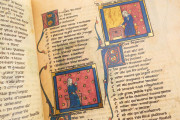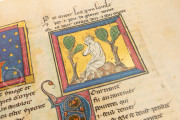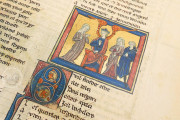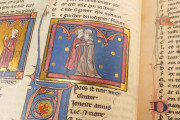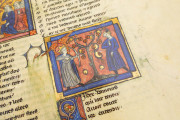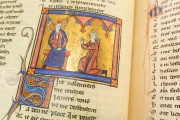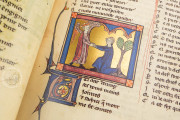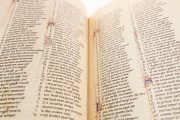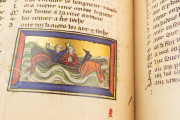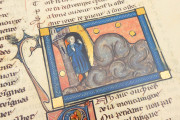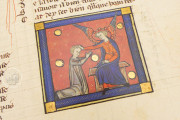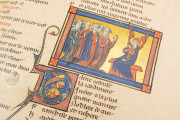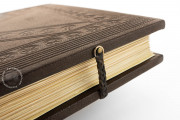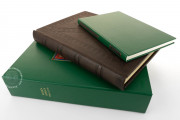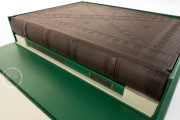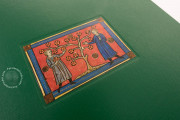The Roman de la Rose of Berthaud d'Achy is an early illuminated manuscript of the long French allegorical poem concerning a lover's quest for his beloved. It is named for its principal scribe and illuminator, Berthaud, from the small town of Achy near Beauvais in northern France. Dating from around 1280, it was probably copied in Beauvais or Paris and boasts ninety-three miniatures. It is important for pioneering the principle of illustrating the poem in column-width miniatures distributed unevenly through the text.
Romance of the Rose Manuscript
The Roman de la rose ("Romance of the Rose") is a Middle French poem in octosyllabic couplets. Guillaume de Lorris began its composition in 1230. Jean de Meun expanded Guillaume's poem in the 1270s, transforming it from Guillaume's 4,000-line dream vision recounted by a lover into a complex allegory of more than 16,000 lines.
Berthaud d'Achy: Scribe, Designer, and Illuminator
Berthaud identifies himself as the manuscript's scribe (fol. 129v) but was responsible for much more than writing most of the text. He painted all but one of the miniatures and made decisions about the placement and subjects of most of the scenes.
A Second Illuminator
The Meliacin Master, named for his work in a manuscript of the Roman de Meliacin (Paris, Bibliothèque nationale de France, MS fr. 1633), painted just one miniature, the representation of a woman grabbing the purse of a young man (fol. 51v). He paints in the same French Gothic idiom as Berthaud, but his figures are more strongly outlined in black, and the garments are barely shaded.
Text in Two Columns
The poetic text is written in two columns in Gothic Textualis script, with the first majuscule of each line set into the margin. An anonymous scribe was responsible for the first portion of the manuscript (fols. 1-32), and Berthaud for the lion's share (fols. 33-129). Rubrics in red (often identifying the speaker) are found only in Berthaud's portion of the text.
Major textual divisions are marked by a miniature and a decorated initial, minor divisions by pen-flourished initials alternating between red with blue flourishing and blue with red flourishing.
Written Instructions for Illumination
Both the anonymous scribe and Berthaud provided written instructions for what was to be depicted in the lower margins of the pages where spaces were left for miniatures. This seems to have been part of a dynamic process of decision-making. For example, on the page with the miniature of the Roman philosopher Seneca bleeding himself to death before the emperor Nero (fol. 39r), Berthaud altered the inscription to indicate this subject, perhaps from an original instruction to show Nero killing his mother.
In the Montefeltro Collection
The manuscript was owned by a certain "A," whose monogram appears on flyleaves at the front and back. It may have been in the collection of Antonio da Montefeltro (d. 1404), Count of Urbino, and was certainly in the collection of his great-grandson Federico da Montefeltro (1422-1482), Duke of Urbino. It entered the Vatican's collection in 1657 as a part of the ducal library of Urbino.
We have 1 facsimile edition of the manuscript "Roman de la Rose of Berthaud d'Achy": Rosenroman des Berthaud d’Achy facsimile edition, published by Belser Verlag, 1987
Request Info / Price
